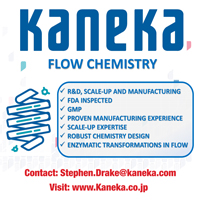Life Sciences
Adopting a phase-appropriate approach to solid-state pharmaceutical chemistry 16th August 2020
By Jules Northen – Research Manager, Onyx Scientific

Dr Julian Northen, research manager at Onyx Scientific, explains how a more phase-appropriate approach to solid-state chemistry may present an effective option for drug development teams in assuring the physical properties of drug products and ensuring optimal drug performance.
The majority of today’s marketed drugs are administered as solids, making solid-state chemistry a critical component of pharmaceutical research and development. The solid-state structure of drug compounds and their relationship to the drug formulation requires full consideration to provide assurance of the physical properties of the drug product. A thorough understanding of the compatibility of the chosen solid phase with drug product excipients in the solid state (relative to chemical and form stability) is also required to avoid the unwanted changes that can occur in pharmaceutical preparations.
Solid form screening and selection is important at all stages of drug development. However, with increasing demands on developers to balance cost pressures with the need for fast progression, especially in the early stages, the industry is calling for more appropriate strategies that pay attention to the specific requirements at different stages in the product lifecycle.
The advantages of collaboration
There is a growing realization from pharmaceutical developers that active pharmaceutical ingredient (API) development and manufacturing requires a more interactive approach with collaborative input from multiple groups, including medicinal chemists, solid form scientists, development chemists, and formulation scientists. Considering input, objectives and deliverables from different parties can aid the adoption of a more phase-appropriate approach that will provide developers with a ‘road map’ to ensure screening activities become increasingly comprehensive as the needs and technical requirements at each development stage evolve. The increased understanding that will be gained through having more individuals and capabilities involved in the process may result in considerable time savings when it comes to selection. If the right studies have been conducted using the right materials and in a logical order, progression to first-in-human studies can be more efficiently achieved.
Despite the advantages of adopting this type of approach already being understood, there still exists a culture of solid form selection that is less robust. For example, it is not uncommon for a drug developer to adopt a form or version based solely on it being an easy way to isolate a clean solid, or on the chemistry naturally delivering the salt or polymorphic form.
Meeting requirements at different stages of development
No two drug candidates are the same and the solid-form strategies required for any single API will vary over the course of its development. The adoption of a phase-appropriate and inclusive approach can enable a more predictive pathway that will enable solid form studies to progress in a way that ensures specific objectives are achieved at different stages.
Discovery and lead optimization
Starting at the discovery and lead optimization stage, a robust set of physiochemical parameters should be identified as markers for the competing analogues in play. This can include a simple response to changes in pH and solubility, Log P, presentation form (oil, solid, amorphous, crystalline), and whether a salt can form and aid in isolation/development.
Early development
During early development, a robust assessment of the various solid form versions and candidates, such as salt versus API, should be carried out. This may encompass solubility across a range of pH, solid stability, solution stability, crystallinity, and thermal properties. The choices must also deliver against chemical development needs, including robustness of process, purge of impurity, and process efficiency. Additionally, an understanding of how the various presentations of each version may influence the drug product is also required, for instance powder flow, bulk density and morphology for simple solid dose formulations.
The information will provide development groups with options to consider as material transitions through Phase 1. For example, the most soluble salt may not always deliver the best option or approximation of bioavailability. Dissolution rate and propensity toward disproportionation and the kinetics of the process will need to be considered along with pharmacokinetic (PK) evaluations that support and enable selection. Ideally, the selected version will be maintained through to commercial manufacture.
Late phase
During late-phase development it is critical to challenge the process in place versus the necessary specification to ensure that the solid form of choice delivers routinely against all performance targets. The process would normally encompass a broader polymorphism study. This may or may not identify competing versions that will provide additional protection from an intellectual property (IP) standpoint. This process can also ensure that as scale increases and the route becomes fixed along with the impurity profile, no new forms emerge to derail the development programme and subsequently lead to costly delays. At this point, a process risk assessment should also be introduced supported by a robust form and crystallization development programme. From a worst-case-scenario perspective, the absence of such a thorough evaluation may mean that developers could see the emergence of new stable forms post-release and commercial manufacture.
Final thought
The identification of an ideal solid form of an API not only improves the PK profile of a drug but can result in more streamlined manufacturing workflows and increased product stability. The collaborative approach created by having multiple groups work together (medicinal chemists, solid form scientists, development chemists, and formulation scientists) cannot be underestimated, and the importance of solid-state considerations at all stages of development programmes is becoming more widely acknowledged. Changes in impurity profiles, processing conditions and excipients can influence the solid form of the API and require careful monitoring throughout the drug development lifecycle.
The solid form of an API will have a significant impact on drug development activities; therefore, appropriately placed studies will help to develop an extensive understanding of the solid form landscape and provide the aforementioned ‘road map’ for development, avoiding unwanted solid form transformations. Building a strategy for solid-state that is phase-appropriate and considers the necessary requirements at the right time can be a useful tool in establishing a more efficient and cost-effective path to market.
Author:
Jules Northen – Research Manager, Onyx Scientific
As Research Manager, Jules Northern is Onyx’s resident expert in solid-state chemistry development, covering screening, crystallization and candidate selection. With more than 15 years’ experience in the field, hedrives Onyx’s solid-state group and integrates with lead optimization services including process and development (PR&D) projects for Phase 1 studies through to Phase 3/commercial API development and manufacturing.
T: +44-(0)191 5166507
E: Julian.northen@onyxipca.com



